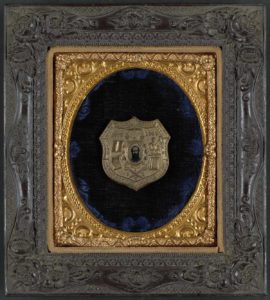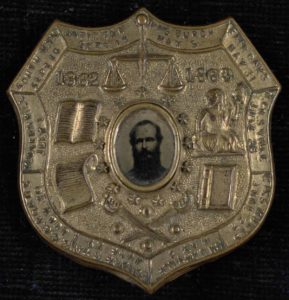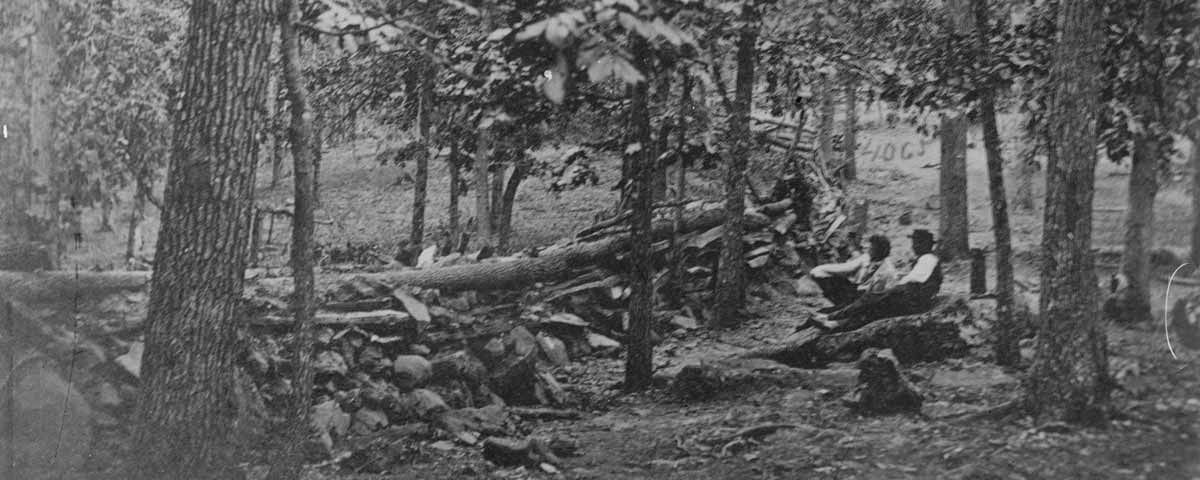Quickly built breastworks saved the day on Culp’s Hill
When the Army of the Potomac’s 12th Corps arrived on Culp’s Hill early in the morning July 2, 1863, 2nd Division commander Brig. Gen. John Geary “submitted…the question of building rifle-pits” to his three brigade leaders—Colonel Charles Candy, Colonel George A. Cobham Jr., and Brig. Gen. George Sears Greene. Doing so was not Geary’s choice. He was of the mindset that building defensive works “unfitted the men for fighting without them.”
At this point of the war, Geary’s opinion was not unusual on either side. Although both armies sometimes built breastworks and earthworks in battles preceding Gettysburg, their construction in the face of the enemy was not standard doctrine, as it would become in 1864. At Gettysburg, in fact, Culp’s Hill was the only location where true field works were constructed.
The first works on the hill were erected the evening of July 1 by troops in Brig. Gen. James S. Wadsworth’s 1st Division, 1st Corps. The division had suffered enormous casualties in the fighting that day, and after retreating through the town to Cemetery Hill, the men were ordered to occupy the northern slope of Culp’s Hill. Upon arrival, Lt. Col. Rufus R. Dawes, commanding the 6th Wisconsin, ordered his regiment to entrench. They set to work with a dozen spades and shovels, obtained from their regimental wagon. The decision to entrench did not come from above. Wrote Dawes: “There were no orders to construct these breastworks, but the situation plainly dictated their necessity.” The other regiments saw the wisdom of Dawes’ actions and soon the whole division was busy entrenching from Stevens’ Knoll to the summit of Culp’s Hill by nightfall.
Seeing the works the 1st Corps troops had built might have prompted Geary’s breastworks query to his brigade commanders. He might also have felt some pressure by the actions of the 12th Corps’ other division commander, Brig. Gen. Alpheus Williams. When his division reached Culp’s Hill, Williams wrote, “I ordered at once a breastwork of logs to be built, having experienced their benefits at Chancellorsville,” adding that “our men had learned to love entrenching with logs.”
It is possible General Greene was the one who suggested building breastworks. He was the only West Pointer among the division’s leadership and understood engineering. “[T]he saving of life,” he said, “was of far more consequence…than any theories as to breastworks, and so far as his men were concerned, they would have them if they had time to build them.” Candy, a former Regular Army enlisted man, shared Geary’s doubts and insisted his brigade would not waste time building works, but Cobham sided with Greene. Fortunately for the 12th Corps, Geary placed Candy’s brigade in reserve and Greene’s and Cobham’s on the front line.

“The men grumbled a little,” recalled Captain George Collins of the 149th New York, but they nevertheless “brought sticks, stones, and chunks of wood, and felled trees and shoveled dirt for three or four hours.”
Although some soldiers refer-red to them as “rifle pits” they were true breastworks. Captain Jesse Jones of the 60th New York described how the men “felled the trees and blocked them into a close log fence,” and appropriated nearby piles of cordwood. The numerous boulders strewn across the hill were incorporated into the line, and head logs for further cover were added along much of the line. Efforts were also made to conceal the works by placing “heavy boughs and logs” in front. The work was so well done, Captain Charles P. Horton noted, the entrenchments “could not be distinguished fifty yards to the front.”
Culp’s Hill remained quiet most of the day, but when Lt. Gen. James Longstreet launched his attack on the Union left about 4 p.m., the summit came under Confederate artillery fire. As the crisis on the Union left grew during the afternoon, Army of the Potomac commander Maj. Gen. George G. Meade ordered the entire 12th Corps to reinforce his embattled flank. To the Federals’ good fortune, 12th Corps commander Maj. Gen. Henry W. Slocum convinced Meade to keep one brigade—Greene’s 3rd—on Culp’s Hill. Greene sent a skirmish line down the slope and aligned his brigade along a single line, each man separated by several feet in order to cover as much ground as possible—a tactic he never would have attempted without the benefit of the breastworks. Just before 7 p.m., Confederate Second Corps commander Lt. Gen. Richard S. Ewell launched an attack on Greene’s position, spearheaded by Maj. Gen. Edward Johnson’s Division, more than 4,000 strong. The skirmishers sent down the slope were soon seen running back uphill, “followed by a Confederate line of battle, yelping and howling in their peculiar manner.

Behind the works, their colors concealed, Greene’s men waited for the enemy to come within range. “The pale faces, staring eye-balls, and nervous hands grasping loaded muskets,” Collins wrote, “told how terrible were those moments of suspense.” The Confederates were allowed to approach to within 50 yards before the order to fire was given. Though the first volley “staggered” the Rebels, it did not stop their advance. But the Yankees continued to blaze away until the “smoke became so dense [they] were unable to distinguish the enemy and were governed more by hearing than sight in directing fire.”
Three times, Johnson’s men came close to reaching the breastworks but were forced to fall back by the relentless fire each time, finally calling off the attacks about 10 p.m. Greene’s men reportedly had fired upward of 80 rounds per man, and though the Confederates had seized the lower summit, the top of Culp’s Hill remained in Union hands.
Heavily reinforced, Johnson’s Division attempted to carry Culp’s Hill again the next morning. But the entire 12th Corps had returned by then and now also had the services of a 6th Corps brigade. Johnson’s attacks failed once more, with heavy losses.
Had Geary’s disdain for breastworks carried the day, it is difficult to envision how the Army of the Potomac could have held onto Culp’s Hill. And had the hill fallen, the army’s position at Gettysburg would have been untenable. Whoever was behind the decision to build those works—and, as we’ve shown, several officers can be so recognized—deserves considerable credit for the Union’s Gettysburg victory. Without them, Captain Collins would write, “the 3d Brigade could never have held the position on the 2d day of July against the overwhelming numbers brought against it.”
Scott Hartwig writes from the crossroads of Gettysburg.





